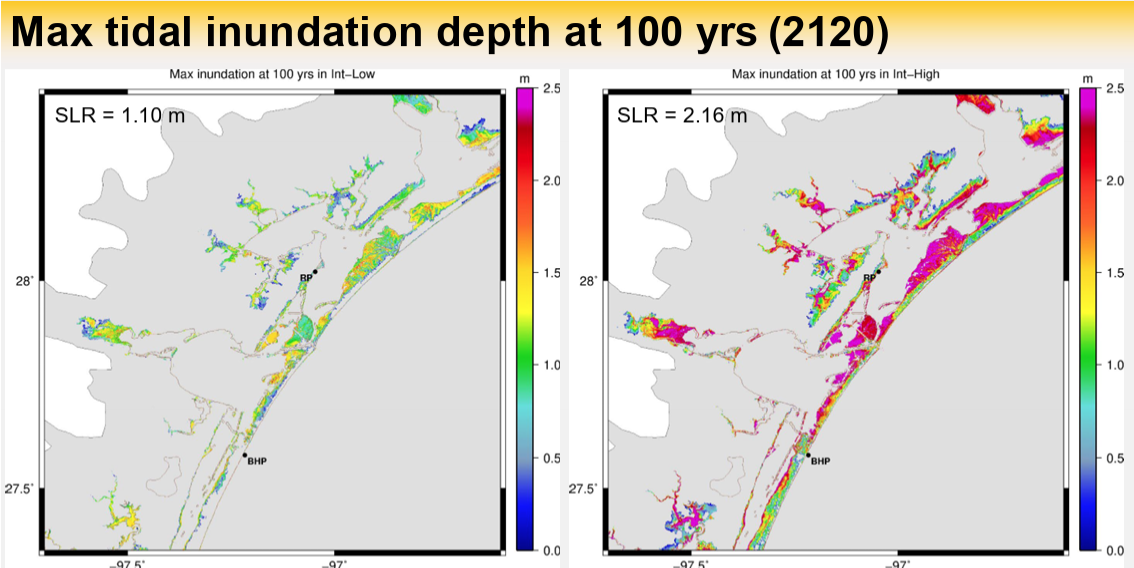A NOAA-supported research team is using modeling to identify the best locations along the Texas Coastal Bend where nature-based features can be used to address the effects of flooding and storm surge on wetlands and infrastructure. Recently, the modelers convened local decision-makers and resource management officials from their Management Technical Advisory Group to provide updates on the modeling approaches, products, and outputs of the project. The group reviewed existing flood and marsh model predictions and discussed potential flood mitigation solutions they would like to see assessed in future modeling to better inform effective and economical project designs.

In particular, attendees explored the flooding and marsh modeling results (Hydro-MEM) through an interactive viewer to understand the dataset and to highlight any areas with unexpected results. This review by local experts offers key insights for refining the models and identifying any issues key locations impacted by flooding that the modeling team will prioritize moving forward, to evaluate the potential performance of a range of conventional flood mitigation and nature-based solutions that the attendees may want to implement.
The convening of the advisory group also offers local and regional officials a chance to discuss common priorities within the region. The meeting included officials from the Coastal Bend Council of Governments, Corpus Christi Regional Economic Development Corporation, NOAA National Estuarine Research Reserve, Texas General Land Office, Texas Water Development Board, Nueces County, Coastal Bend Bays and Estuaries, Navy, TXDOT and the Corpus Christi Metropolitan Planning Organization.
View the workshop report from this November meeting.
The project is led by Dr. James Gibeaut of the Harte Research Institute (HRI), Texas A&M University – Corpus Christi (TAMUCC). Co-investigators include Drs. Katya Wowk and Renee Collini (The Water Institute), Chris Kees, Peter Bacopoulos, and Jin Ikeda (Louisiana State University), Lihong Su, Diana Del Angel (HRI/TAMUCC). The project is part of NCCOS’s Effects of Sea Level Rise Program (ESLR) Program.
